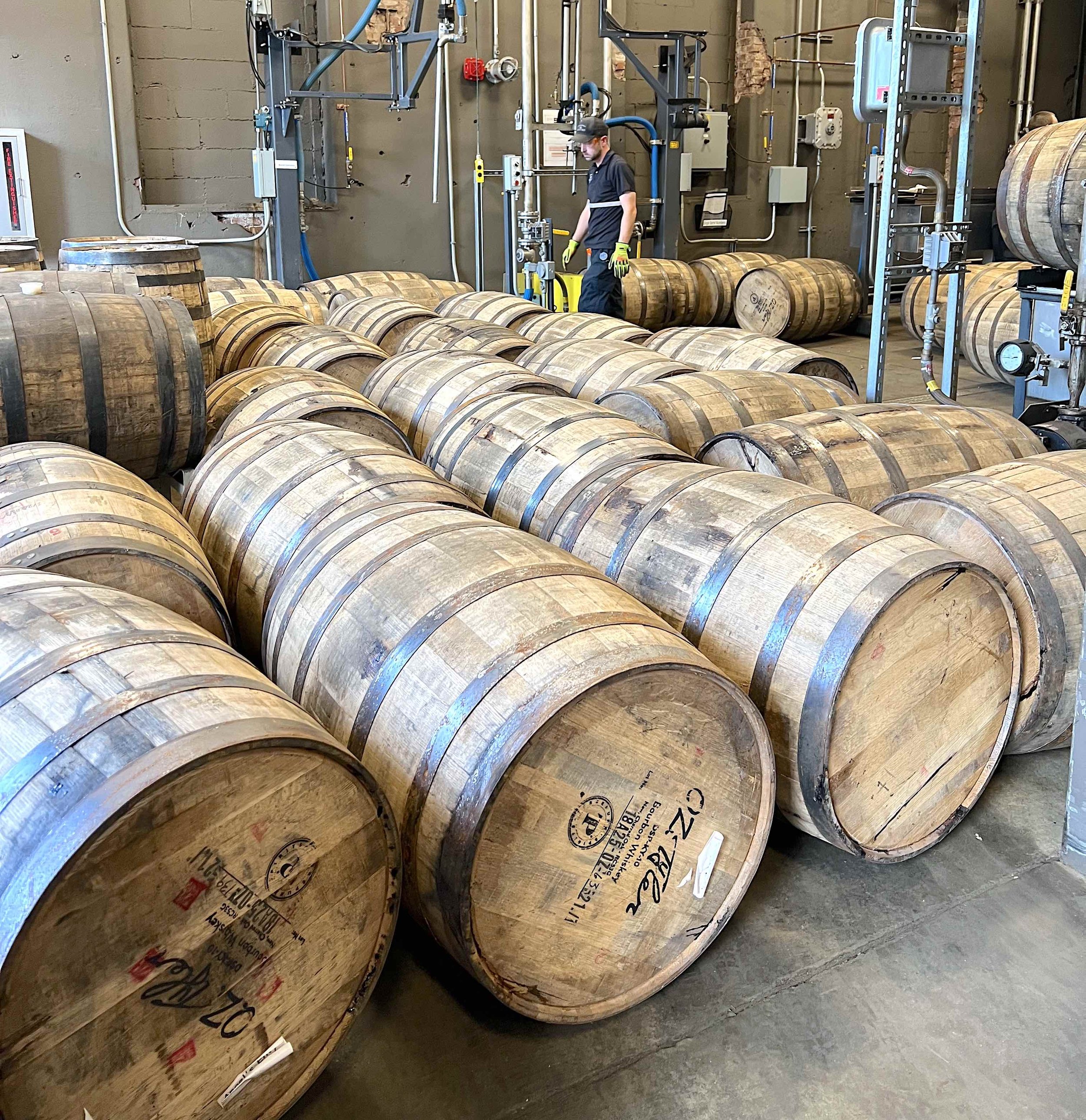Like I said before, downtown Louisville has been evolving rapidly over the last few years. When I was here back in 2017, I was only able to visit Angel’s Envy distillery because my friend Conor O’Driscoll, their distiller at the time, was able to sneak me in the side door for a quick ten minute viewing (no photos allowed). Today, however, it’s a bustling tourist attraction with a healthy gift shop and tours galore, open to everyone who wants to visit. Not only that, it’s only a few blocks west of the AC Marriott, so you can easily walk if you’re staying in Nulu.
What’s even more exciting is this: Mission is the very first retailer in America to be invited to select a barrel onsite at the distillery. We did the first ever tour and barrel tasting with Deja, Angel, and Melissa from the Bacardi team, and—more importantly—we were told that all of the barrels from the sampling were overwhelmingly likely to be whiskey from Angel’s Envy distillery itself, not the purchased juice the brand survived on for its initial years. We were able to taste a five year old Angel’s Envy Bourbon with no port maturation as a control for our barrel tasting, so can you guess what we did?
Vic and I searched around for the Port cask with the least amount of influence, rather than the richest, most dessert-y expression. Knowing that we were going to get a barrel from the new distillate, we wanted to give our customers the chance to taste the whiskey itself in as pure of a state as possible. There was an incredible specimen that lived up to the hedonistic and supple delight that is Angel’s Envy at full proof, brimming with candied fruit and dark chocolate flavors. However, we chose the one that tasted the most like Bourbon and the least like Port.
And let me tell you: the new Angel’s Envy-distilled Bourbon is GOOD. We’re excited to be the first store in America to bring you back a barrel directly from the distillery.
And later that night at dinner, I got to hang out with my old friend (and distant family member) Conor O’Driscoll, who likely distilled that Angel’s Envy barrel before becoming the master distiller at Heaven Hill. We had dinner together at Jason Brauner’s Bourbons Bistro, then made our way down Frankfort Street into the lightning storm and the sunset.
-David Driscoll

























